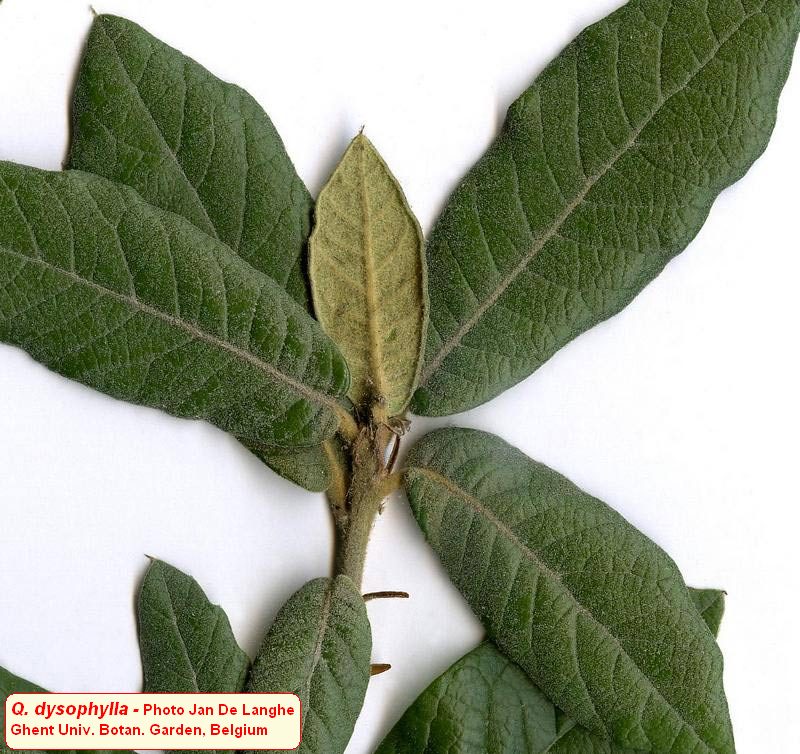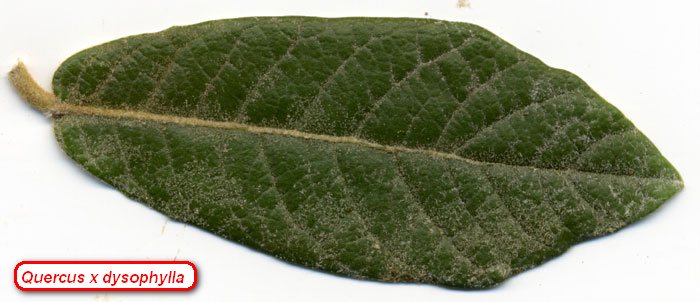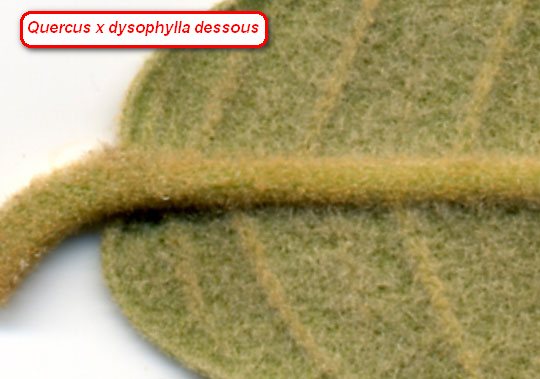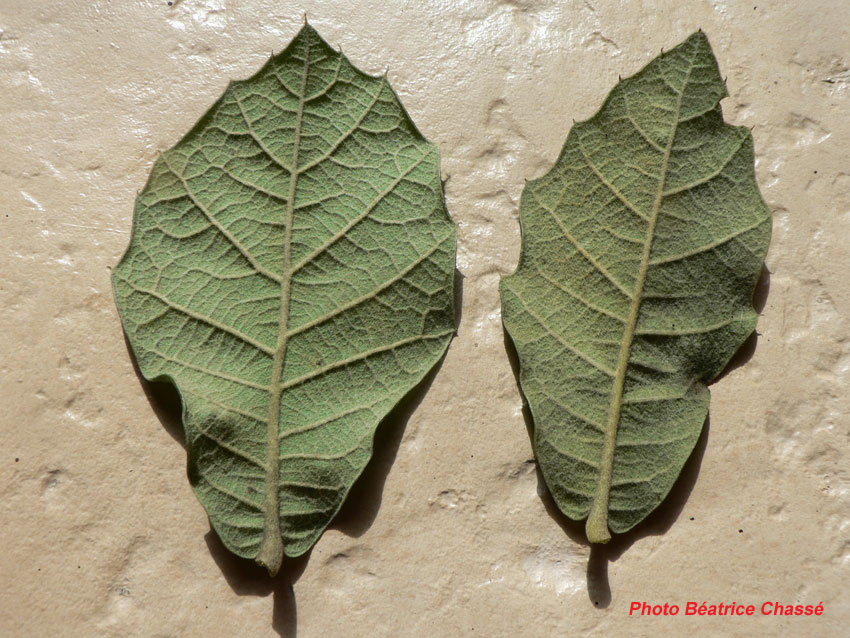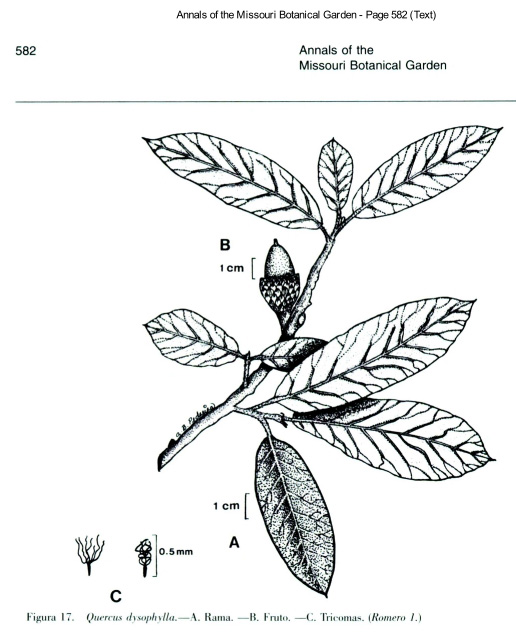| Quercus x dysophylla | |
| Author | Benth. 1840 Pl. Hartw. 55 |
| Synonyms | crassifolia
x crassipes hahnii Trel. 1924 Diagnosis here dysophylla Née esperanzae Trel. 1924 Diagnosis here fournieri Trel. 1924 Diagnosis here |
| Local names | laurelillo |
| Range | Mexico (Guanajuato, Michoacan, Hidalgo, Mexico, Veracruz, San Luis Potosi, Tlaxcala); 2000 to 2800 m; |
| Growth habit | 5-20 m |
| Leaves | 4-14 cm long, 2-5 cm wide; deciduous; thick, leathery; ovate, lanceolate, or elliptic; base rounded to cordate, sometimes asymmetric; apex obtuse or pointed, aristate; margin thick, sometimes undulate, revolute, entire or slightly crenate, with sometimes an aristate tooth each side, and simple aristae (0 to 12) scattered along the margin; smooth, bright, dark green above with some fasciculate sessile hairs scattered on the limb and along midrib; densely yellowish tomentose to lanuginous beneath (stalked, fasciculate hairs 0.5 mm long, and some glandular hairs); 9-14 pairs of lateral veins, straight or slightly curved, prominent beneath; epidermis bullate; petiole hairy, coffee-coloured aging darker, 3-8 mm long; |
| Flowers | March-April; male catkins 5-10 cm long, bearing numerous pubescent flowers; 1 or 2 pubescent female flowers on a 0.4-1 cm long axis; |
| Fruits | acorn ovoid 1.5 cm, grey brown, solitary or paired; sessile or on a very short peduncle (1-2 mm); cupule shallow, turbinate or sometimes half-round, with thin and rounded scales, sometimes rim rolled under, enclosing half of the nut; maturing in 2 years in September-October; |
|
Bark, twigs and |
bark grey, scaly; twigs 1-3 mm long, grooved, tomentose first year, becoming smooth, with lenticels; buds ovoid, with rounded apex, pale brown, 2-5 mm long, with margin scales pilose; deciduous, pubescent, 4-9 mm long stipules; |
| Hardiness zone, habitat | hardy zone 7; |
| Miscellaneous |
-- Sub-genus Quercus, section Lobatae; |
| Subspecies and varieties |
|
| Pictures |
|
